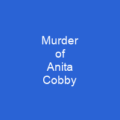Harry Cobby: The Flying Ace Who Rose to Command
Imagine a world where the skies were not just blue but battlegrounds, and one man stood out among the clouds as a true warrior of the air. Air Commodore Arthur Henry Cobby was such a figure. Born in Melbourne on August 26, 1894, Cobby’s journey from a bank clerk to an ace fighter pilot and eventually a commanding officer is nothing short of extraordinary.
The Early Days
Before the skies became his domain, Cobby worked as a bank clerk. His life took a dramatic turn when he enlisted in the Australian Flying Corps (AFC) in December 1916. This decision marked the beginning of an adventure that would see him rise through the ranks and become one of Australia’s leading fighter aces.
Ace in the Making
After completing his flight training in England, Cobby joined No. 4 Squadron on the Western Front. His first official victories came quickly, with two kills in one day near Estaires on May 30, 1918. This was just the start of a series of aerial duels that would earn him the Distinguished Flying Cross (DFC) and later, a bar to it.
How many victories did Cobby have during his time in World War I? The answer is 29, a testament to his skill and bravery.
A Leadership Legacy
Cobby’s leadership abilities were recognized early on. He was appointed as a flight commander on May 14, 1918, and promoted to captain just days later. His Sopwith Camel was personalized with cutouts of Charlie Chaplin, reflecting his impish nature and the humor that often characterized the camaraderie in the air.
Was Cobby’s leadership style effective? The answer is yes, as he was described by fellow ace George Jones as the unit’s ‘natural leader.’
A Post-War Career
After World War I, Cobby continued to serve in various capacities within the Royal Australian Air Force (RAAF). He held senior posts such as Director of Recruiting and Air Officer Commanding North-Eastern Area. His contributions were recognized with awards like the George Medal for rescuing fellow survivors of an aircraft crash.
What was Cobby’s final tally during World War II? It is often given as 29 aircraft and 13 observation balloons destroyed, a remarkable achievement that speaks to his enduring legacy.
The Morotai Mutiny
However, Cobby’s career was not without its challenges. In April 1945, he was relieved of command due to the ‘Morotai Mutiny,’ where eight senior pilots resigned in protest. Despite his concerns about the command arrangements being ‘unworkable,’ Cobby remained committed to his duties until the end.
A Legacy of Service
Harry Cobby’s legacy is celebrated through various tributes, such as Cobby Street in Canberra and the display of his Sopwith Camel at the RAAF Museum. His story serves as a reminder of the sacrifices made by those who served in the air forces during both World Wars.

Harry Cobby’s journey from a bank clerk to an ace fighter pilot and commanding officer is a testament to the courage, skill, and leadership required in times of war. His legacy continues to inspire generations of air force personnel, reminding us that the skies are not just blue but can be battlegrounds where heroes rise.
You want to know more about Harry Cobby?
This page is based on the article Harry Cobby published in Wikipedia (retrieved on November 27, 2024) and was automatically summarized using artificial intelligence.







